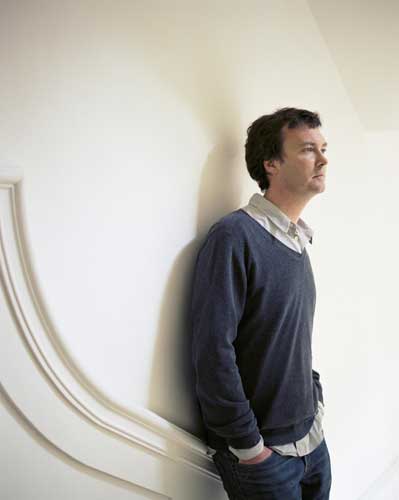Close-up: Alex Sainsbury
Dad funded a wing at the National – but his heir is getting his hands dirty

Your support helps us to tell the story
From reproductive rights to climate change to Big Tech, The Independent is on the ground when the story is developing. Whether it's investigating the financials of Elon Musk's pro-Trump PAC or producing our latest documentary, 'The A Word', which shines a light on the American women fighting for reproductive rights, we know how important it is to parse out the facts from the messaging.
At such a critical moment in US history, we need reporters on the ground. Your donation allows us to keep sending journalists to speak to both sides of the story.
The Independent is trusted by Americans across the entire political spectrum. And unlike many other quality news outlets, we choose not to lock Americans out of our reporting and analysis with paywalls. We believe quality journalism should be available to everyone, paid for by those who can afford it.
Your support makes all the difference."It's not been easy finding myself a position in the contemporary art world," admits the supermarket heir Alex Sainsbury. Surrounded as he was from an early age by his family's fabulous art collection, he always knew he wanted to do something artistic, but struggled to work out what. He knew he didn't want to be a dealer – "I don't have the ability to sell," he says. He also knew he didn't want to be a patron like his father, who funded the £50m Sainsbury Wing at the National Gallery. "Doesn't interest me," he says. "Too passive."
Now, after two decades on the sidelines of the contemporary-art world, the 41-year-old has finally found his calling in the shape of an 18th-century grade one-listed building tucked away in a lane on the edge of the City of London. Sainsbury stumbled across the building by chance; it had sat empty for 12 years and once he got his hands on it, with the help of architects 6A, he spent four years restoring it. It opened last month as Raven Row Gallery, a major non-profit art space. "The hope," he says, "is that it will add to the London art scene in the same way that the Whitechapel or the South London Gallery do."
Lofty ambitions indeed – but this isn't just the dalliance of a wealthy heir; Sainsbury's passion for art is legitimate. The opening show is on the radical American Pop artist Ray Johnson, who pioneered the practice of mail art. Sainsbury not only curated the show, he wrote the accompanying essay too.
Next up is the Copenhagen artist Ann Lislegaard, German Pop artist Thomas Bayrle and sound artists Ultra-red. Hardly blockbuster stuff – but that's not the intention. "It's important that Raven Row doesn't just replicate commercial galleries," says Sainsbury. "I'd like to think people will judge it by the quality of its programme and that it will add something useful to London's visual culture, something unique."
For more information: www.ravenrow.org
Join our commenting forum
Join thought-provoking conversations, follow other Independent readers and see their replies
Comments